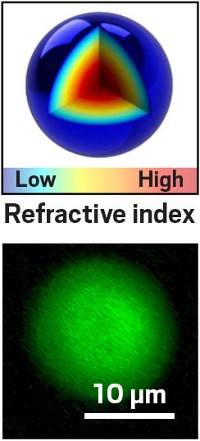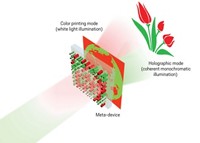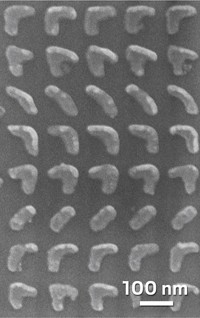Advertisement
Grab your lab coat. Let's get started
Welcome!
Welcome!
Create an account below to get 6 C&EN articles per month, receive newsletters and more - all free.
It seems this is your first time logging in online. Please enter the following information to continue.
As an ACS member you automatically get access to this site. All we need is few more details to create your reading experience.
Not you? Sign in with a different account.
Not you? Sign in with a different account.
ERROR 1
ERROR 1
ERROR 2
ERROR 2
ERROR 2
ERROR 2
ERROR 2
Password and Confirm password must match.
If you have an ACS member number, please enter it here so we can link this account to your membership. (optional)
ERROR 2
ACS values your privacy. By submitting your information, you are gaining access to C&EN and subscribing to our weekly newsletter. We use the information you provide to make your reading experience better, and we will never sell your data to third party members.
Materials
Shifting Light into Reverse
A new material with a negative index of refraction could lead to new optical technologies
by Ivan Amato
December 7, 2005

A new nanomaterial of minuscule gold rods embedded in glass manipulates light passing through it like no naturally occurring substance (Opt. Lett. 2005, 30, 3356). Potential payoffs, say the Purdue University inventors of the material, are optical microscopes that can image molecules and photolithography processes that can sculpt more components onto silicon chips.
The phase, or wave motion, of certain light passing through the new material ends up traveling backward even as the light itself moves forward—a dynamic akin to peddling backward on a coasting bike, the researchers explain. In 2001, when scientists made the first material structure with this trait known as negative index of refraction, it was a sensation because it was the first demonstration of a long-predicted phenomenon. It only worked with longish-wavelength microwave radiation, however.
In the new work, physicist Vladimir M. Shalaev and his colleagues describe the first negative index of refraction material (NIM) to work in the communications sweet spot of around 1.5 µm—the wavelengths that course through optical fiber networks.
“It brings to mind new ways to control light in fibers,” Shalaev says. Although the gold-based NIM now is too “lossy,” which means it absorbs too much incoming radiation to be practical, Shalaev says it opens the way to negative index optical elements good for packing and processing more light in optical communications systems.
“What’s really exciting about these materials is the engineering freedom they provide,” comments Wounjhang Park of the University of Colorado, Boulder, who works with a different negative index system—photonic crystals made of silicon rods in a polymer matrix.
One spectacular possibility for NIMs is known as superlensing, in which objects can be imaged with a resolution far finer than the illuminating wavelength. The basis of the effect is that NIMs make light refract inward rather than outward as do conventional materials with positive index of refraction. With superlensing NIMs, visualizing proteins in intact cells using even optical microscopes could become routine, Shalaev suggests.





Join the conversation
Contact the reporter
Submit a Letter to the Editor for publication
Engage with us on Twitter